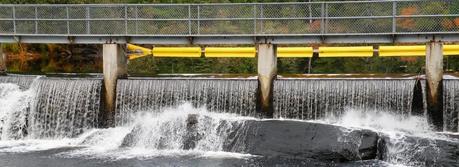
3-Year DOE Study Assessed Potential Hydropower Upgrades in the U.S.
The Energy Department has recently published a report called “Quantifying the Value of Hydropower in the Electric Grid” outlining key improvements that can be made to hydropower production in the United States to provide more efficient and cost-effective electricity to homes and businesses.
Developed with funding from the Energy Department, the Electric Power Research Institute’s (EPRI) report identifies and assesses the quantifiable benefits from potential improvements. The report cites potential upgrades such as installing turbines that can operate with lower water levels, utilizing new power plant designs that can increase revenue and efficiency, and monetizing the services hydropower provides to the nation’s electric grid.
Hydropower supplies about 7% of U.S. electricity generation and is currently the nation’s largest source of renewable electricity. Hydropower is widely valued for the ancillary services, or flexibility, it provides to the power grid—allowing storage capabilities, enabling fast stops and starts, and responding rapidly to imbalances of supply and demand to maintain power system stability. For example, pumped storage hydropower plants can pump water uphill when electricity supply exceeds demand, such as during nighttime hours or times when renewable energy sources are generating more power than consumers are using. This ability to store energy until it is needed—and to absorb excess renewable energy generation—lowers electricity prices and enables the generation of more renewable electricity.
The researchers looked at improvements that could boost the efficiency and output of hydropower plants and at pumped storage hydropower systems, particularly in their potential to be integrated with variable renewable sources such as wind and solar power. According to the report, hydropower plants could see their largest revenue and efficiency increases by deploying new hydropower technologies, making operational improvements, utilizing hydropower’s flexibility more in grid resource planning, and monetizing the energy storage capability of pumped storage. Among the key findings from the report: relying more heavily on hydropower to address changes in electricity supply and demand could provide more flexible reserve power options and reduce wear and tear on conventional thermal-generating equipment; and expanding the effective operating range of hydropower units by reducing the minimum amount of water needed to use the turbines stably can increase the production value of plants by 60%. EPRI also published nine accompanying case studies and supplemental reports that discuss the elements covered in the final report in greater detail.
Quantifying the Value of Hydropower in the Electric Grid: Final Report (pdf)

